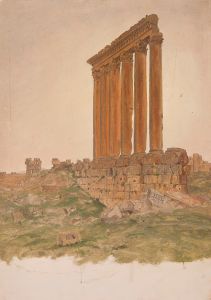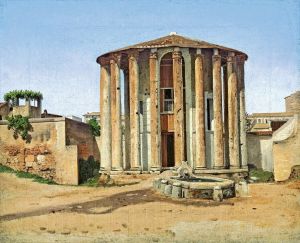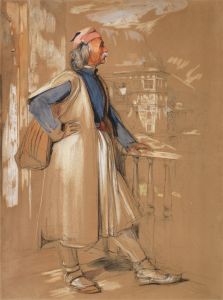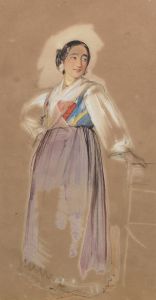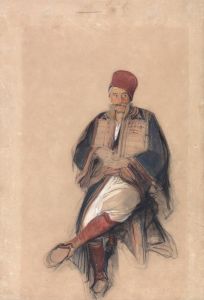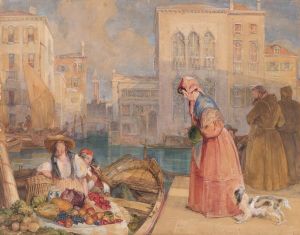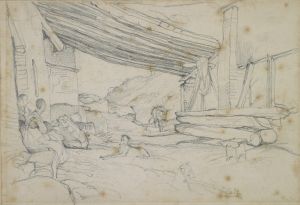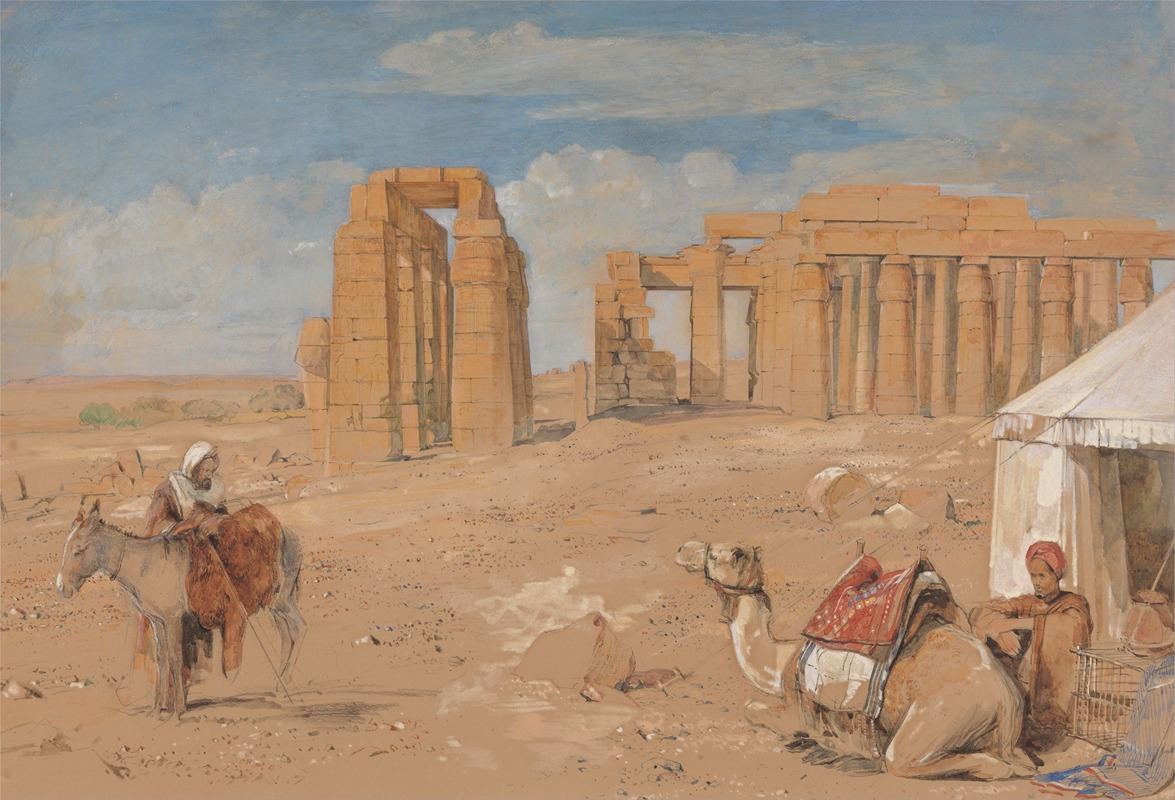
The Ramesseum at Thebes
A hand-painted replica of John Frederick Lewis’s masterpiece The Ramesseum at Thebes, meticulously crafted by professional artists to capture the true essence of the original. Each piece is created with museum-quality canvas and rare mineral pigments, carefully painted by experienced artists with delicate brushstrokes and rich, layered colors to perfectly recreate the texture of the original artwork. Unlike machine-printed reproductions, this hand-painted version brings the painting to life, infused with the artist’s emotions and skill in every stroke. Whether for personal collection or home decoration, it instantly elevates the artistic atmosphere of any space.
"The Ramesseum at Thebes" is a painting by the British artist John Frederick Lewis, renowned for his detailed and evocative depictions of Orientalist themes. Lewis, born in 1804, was a prominent figure in the Orientalist movement, which sought to capture the essence and aesthetics of the Middle East and North Africa through European eyes. His works are celebrated for their meticulous attention to detail and vibrant use of color, often reflecting his extensive travels and deep fascination with the cultures he encountered.
This particular painting, "The Ramesseum at Thebes," showcases the ruins of the Ramesseum, a mortuary temple built for Pharaoh Ramesses II in ancient Egypt. The Ramesseum is located in Thebes, one of the most significant archaeological sites in Egypt, known today as Luxor. The temple complex was constructed during the 13th century BCE and is part of the Theban Necropolis, a UNESCO World Heritage Site. It was dedicated to the god Amun and served as a place of worship and a memorial for the pharaoh.
Lewis's painting captures the grandeur and historical significance of the Ramesseum, highlighting the architectural features that have fascinated historians and archaeologists for centuries. The temple is renowned for its massive pylons, colossal statues, and intricate reliefs that depict the achievements and divine status of Ramesses II. These elements are likely emphasized in Lewis's work, reflecting his skill in rendering architectural details with precision.
The painting is a testament to Lewis's ability to convey the atmosphere and majesty of ancient sites, transporting viewers to a time long past. His work often reflects a romanticized vision of the East, a common trait among Orientalist artists, who were captivated by the exoticism and mystery of the regions they portrayed. Lewis's attention to light and shadow, as well as his use of color, would have been employed to enhance the dramatic effect of the scene, drawing the viewer into the ancient world of the pharaohs.
John Frederick Lewis spent a significant portion of his life traveling, particularly in the Middle East and North Africa, which greatly influenced his artistic output. His time in Egypt, from 1841 to 1851, was particularly formative, providing him with firsthand experience and inspiration for many of his works. During this period, Lewis lived in Cairo, immersing himself in the local culture and producing numerous sketches and studies that would later inform his paintings.
"The Ramesseum at Thebes" is part of Lewis's broader body of work that explores the intersection of history, architecture, and culture. His paintings are housed in various collections, including major museums and galleries, where they continue to be appreciated for their artistic and historical value. Through his art, Lewis offers a window into the past, inviting viewers to explore the rich tapestry of ancient civilizations and their enduring legacies.






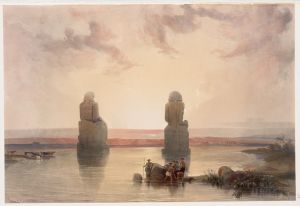
![Temple at Wady Dabod [Wadi Dâbûd], Nubia.](/imgs/217543/s/david-roberts-temple-at-wady-dabod-wadi-dabud-nubia-14fd5f6c.jpg)
![The Great Sphinx, Pyramids of Gizeh [Giza]. July 17th, 1839.](/imgs/217557/s/david-roberts-the-great-sphinx-pyramids-of-gizeh-giza-july-17th-1839-98f269c8.jpg)

